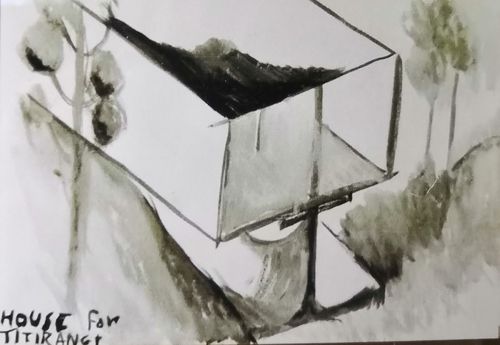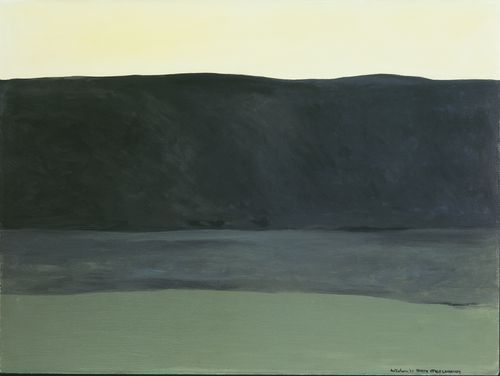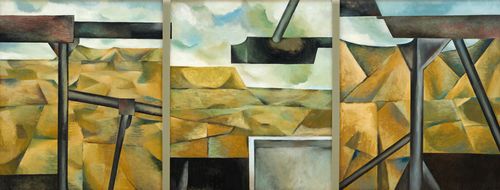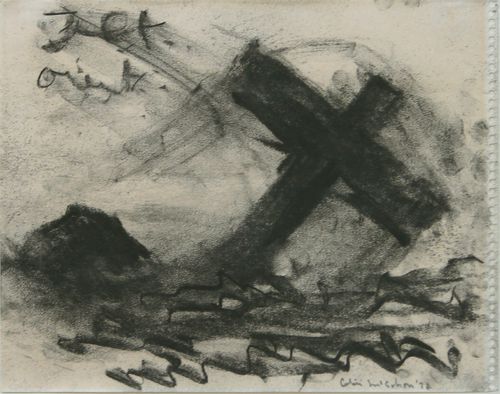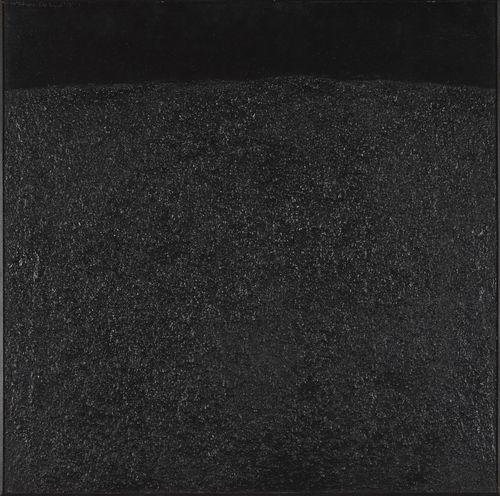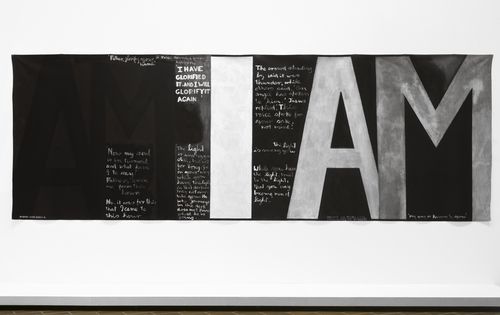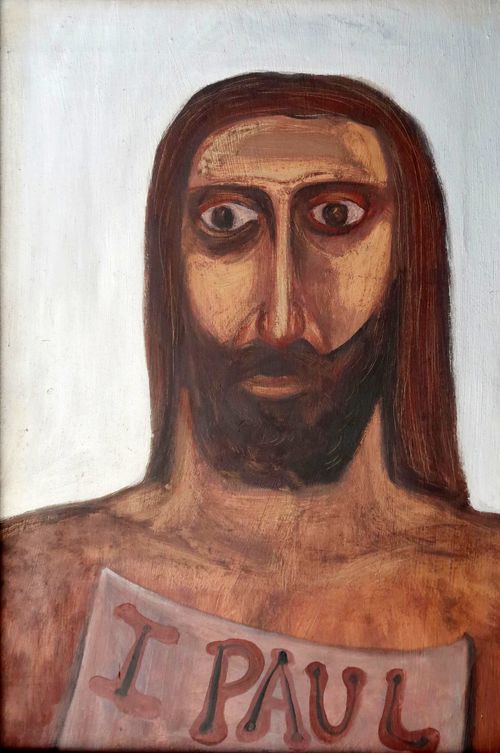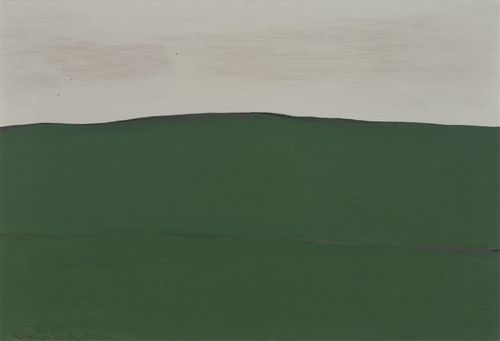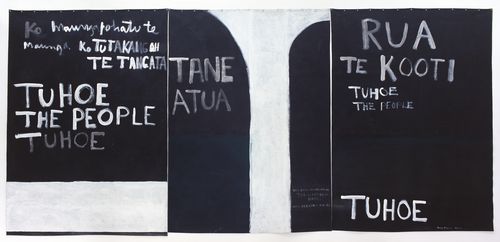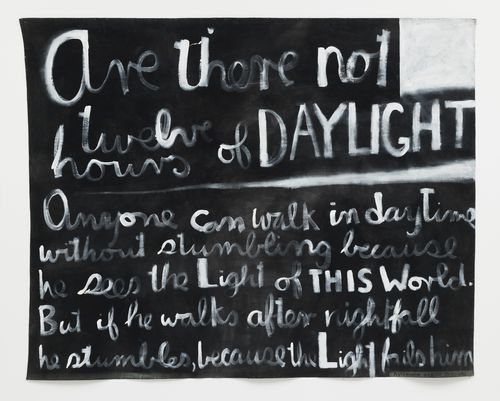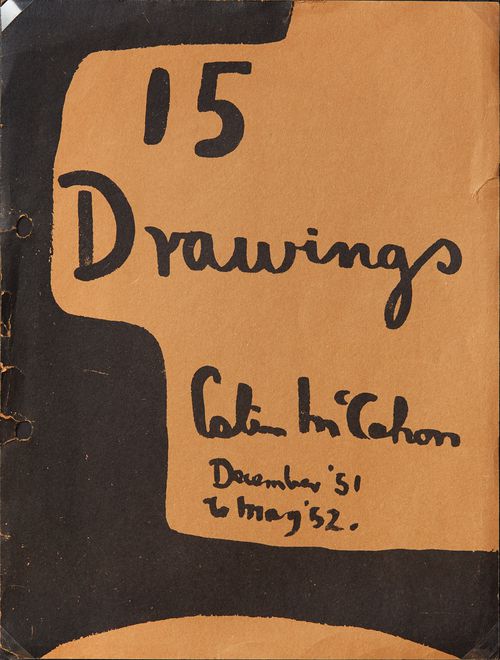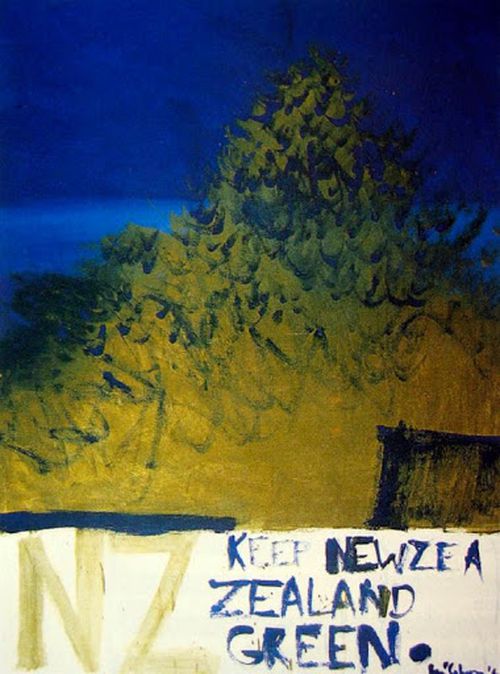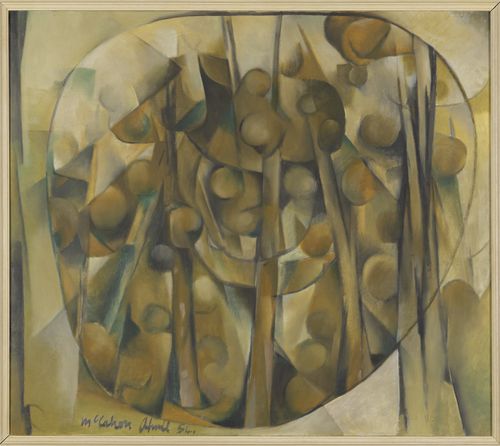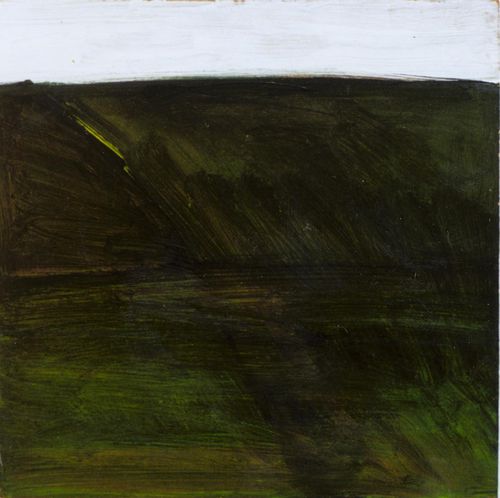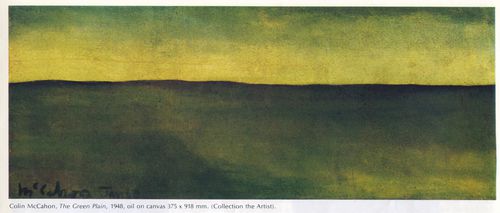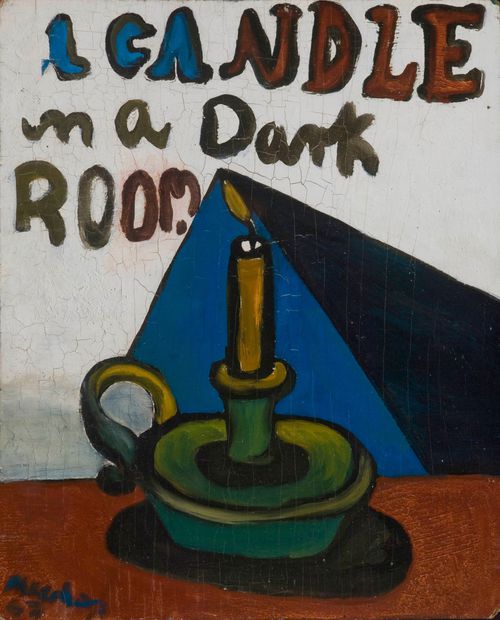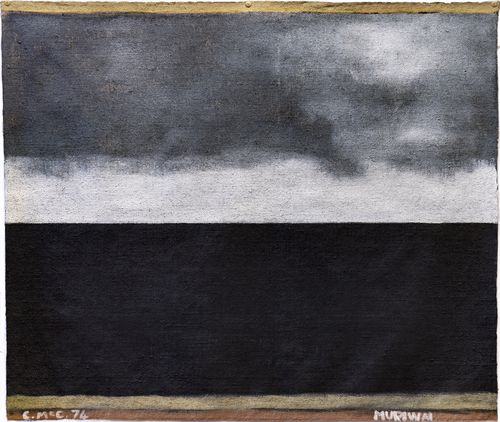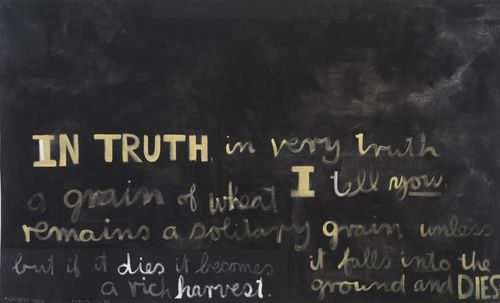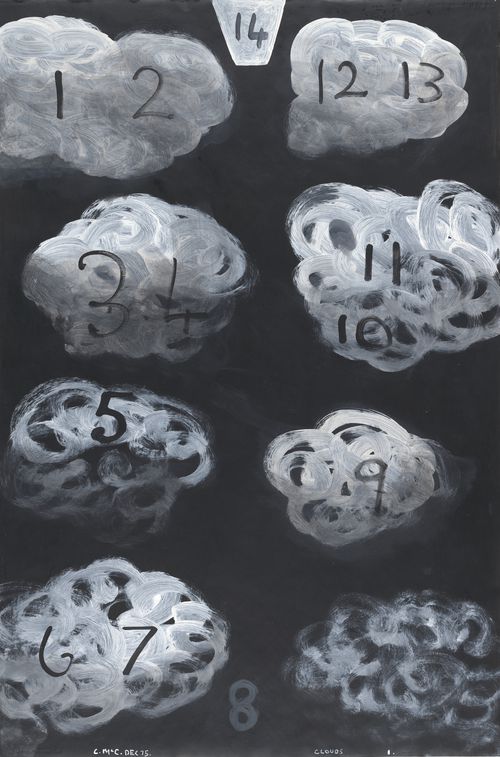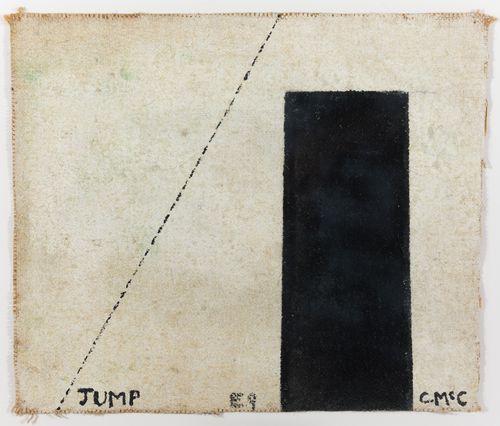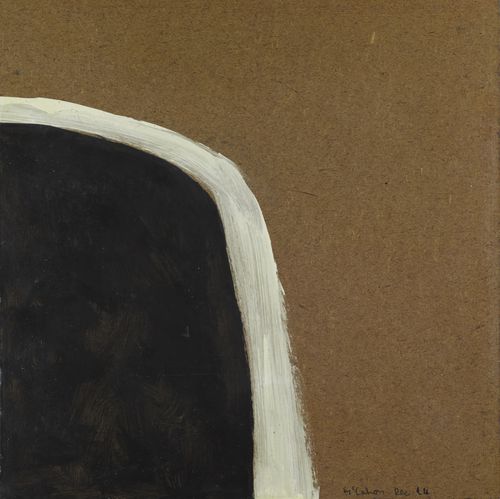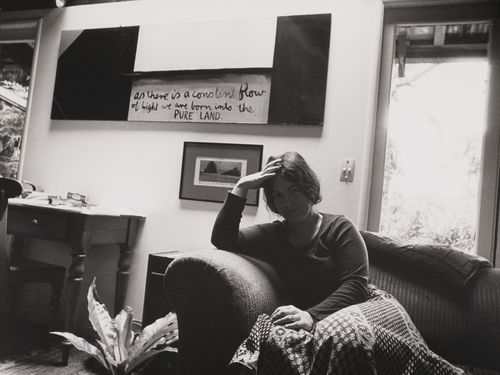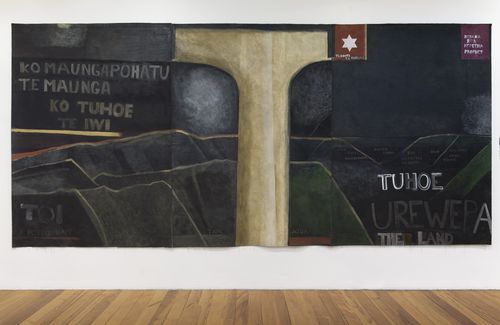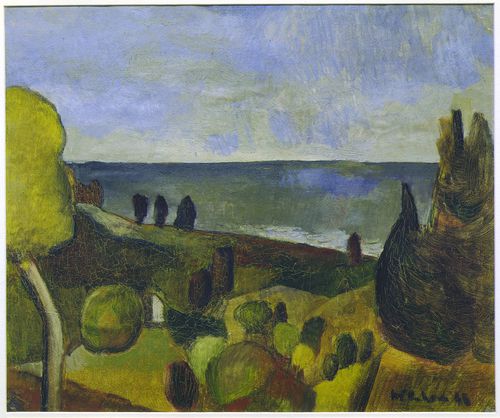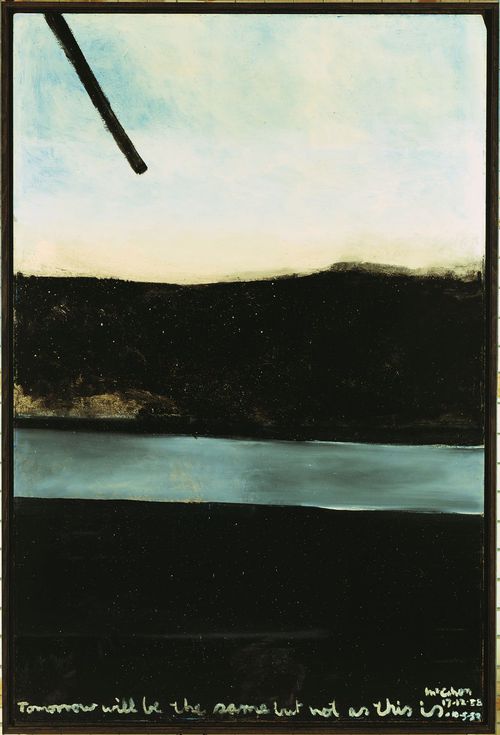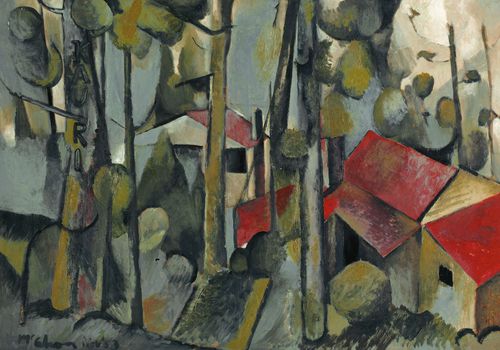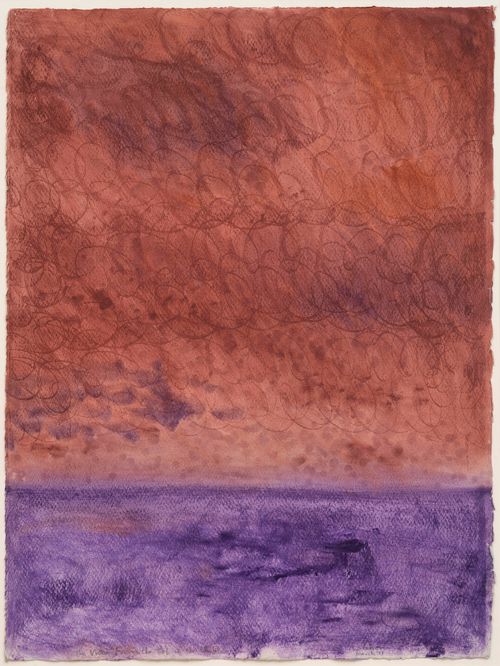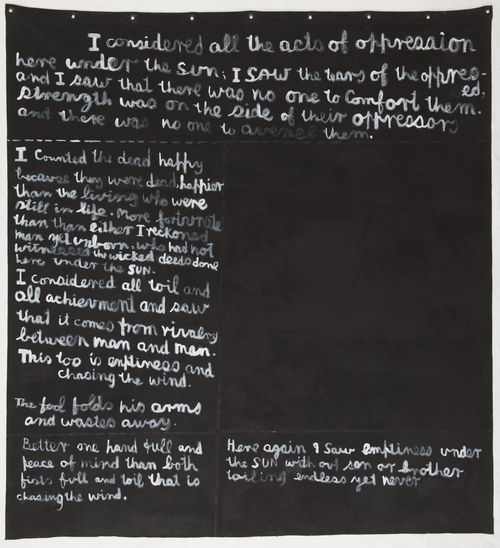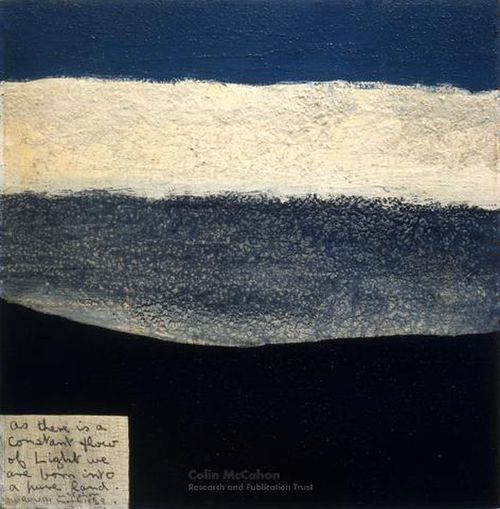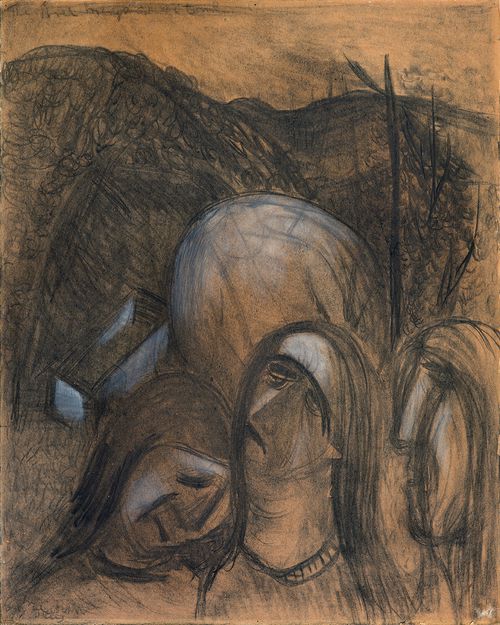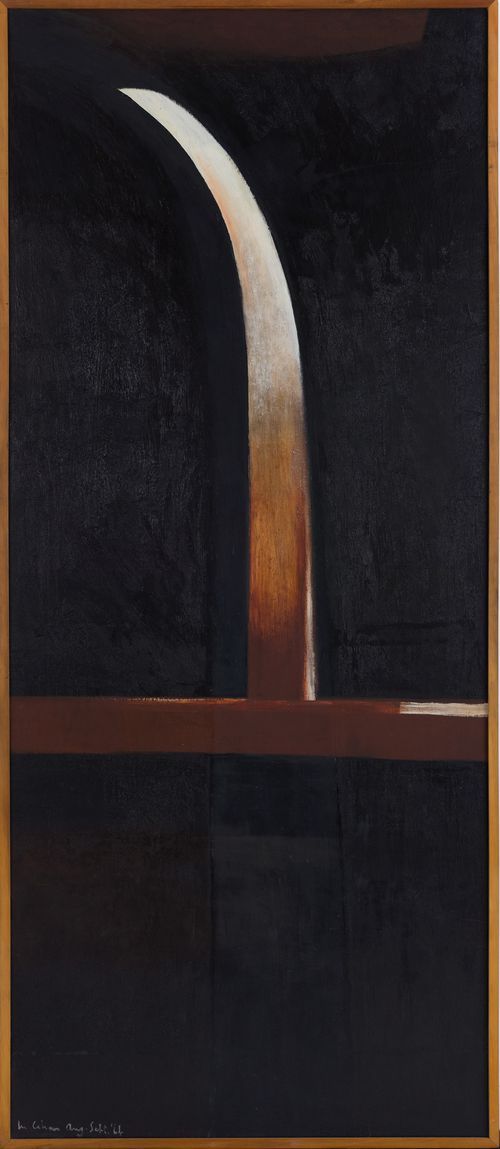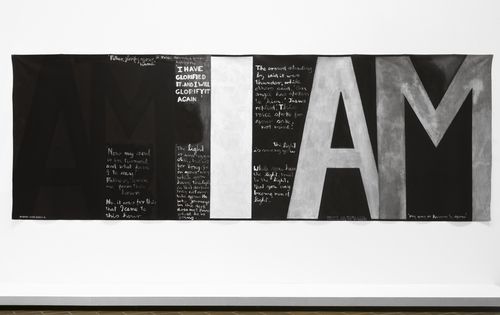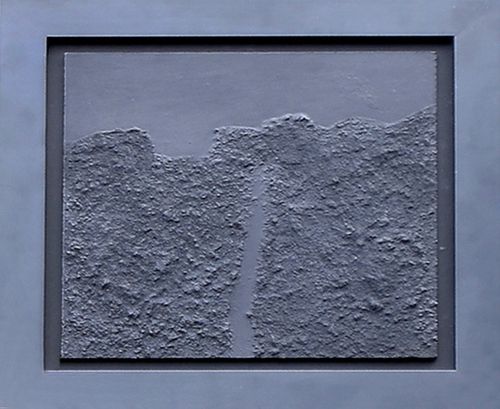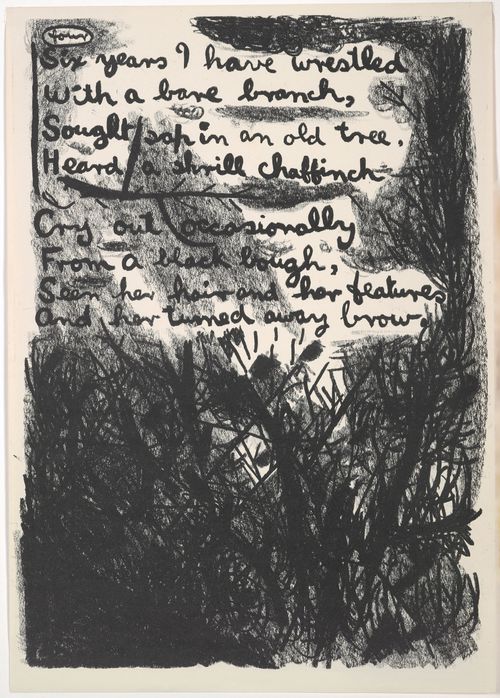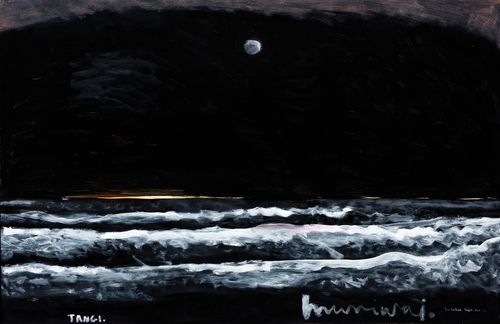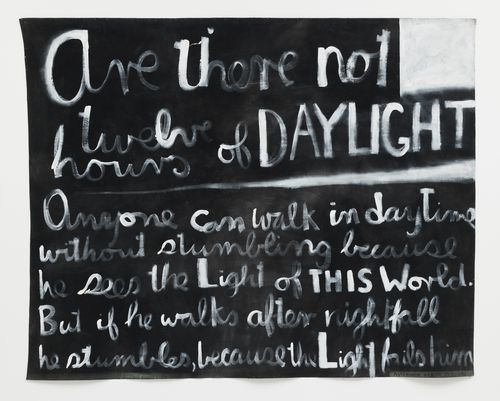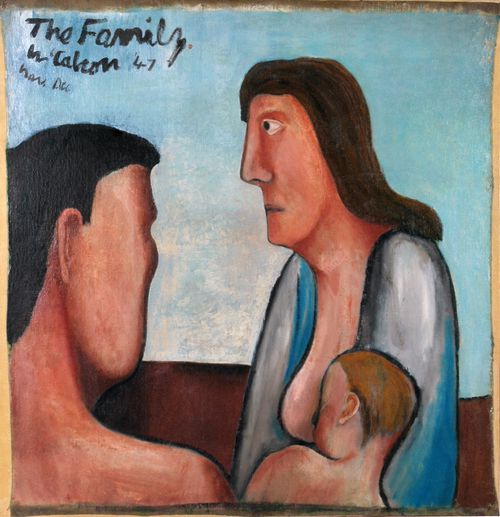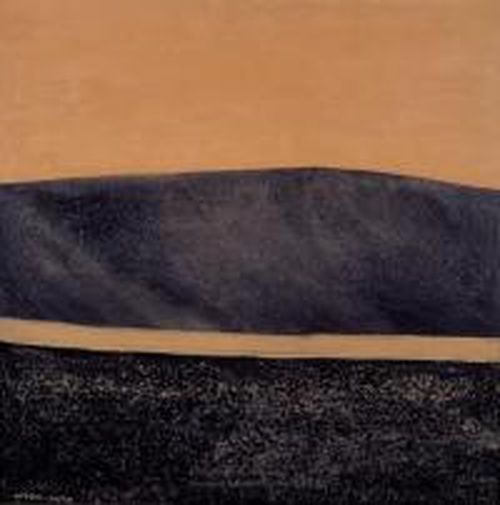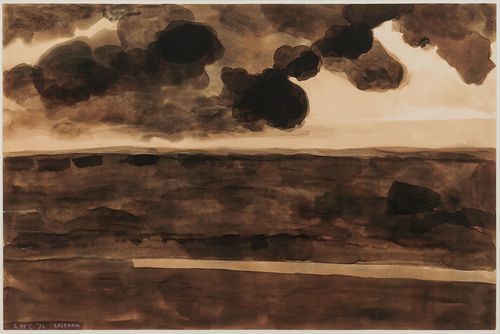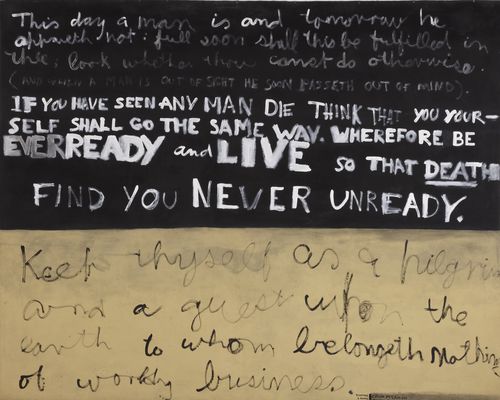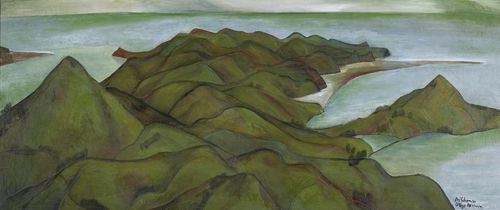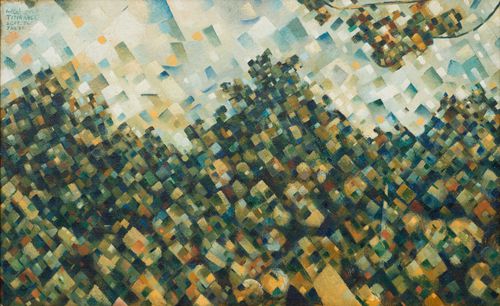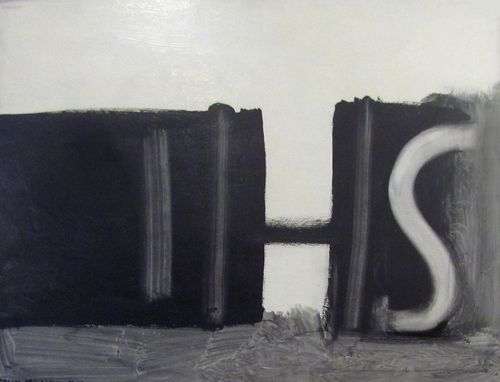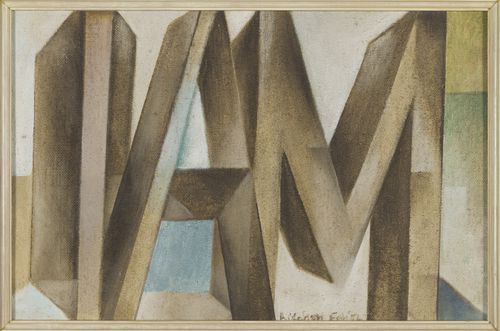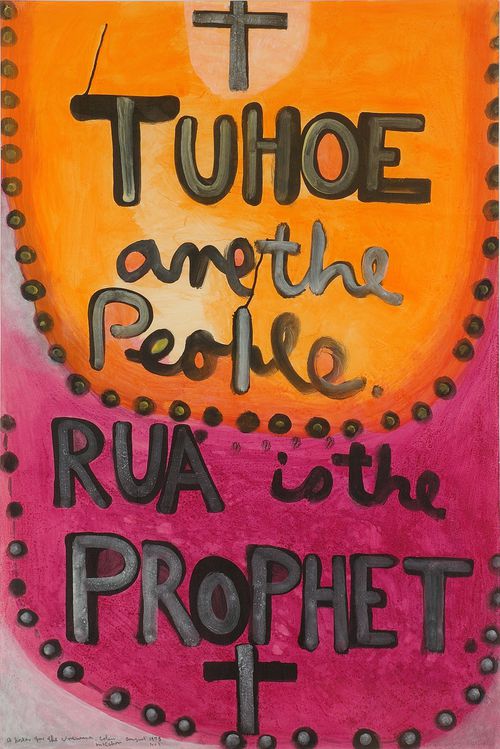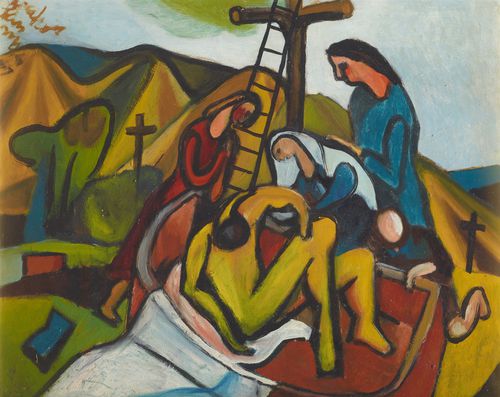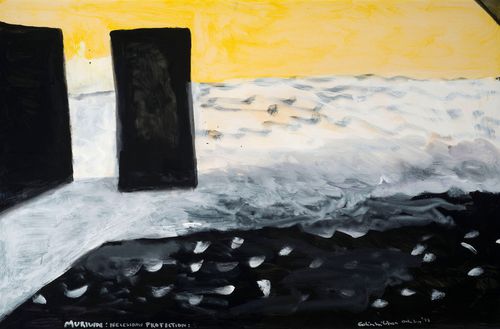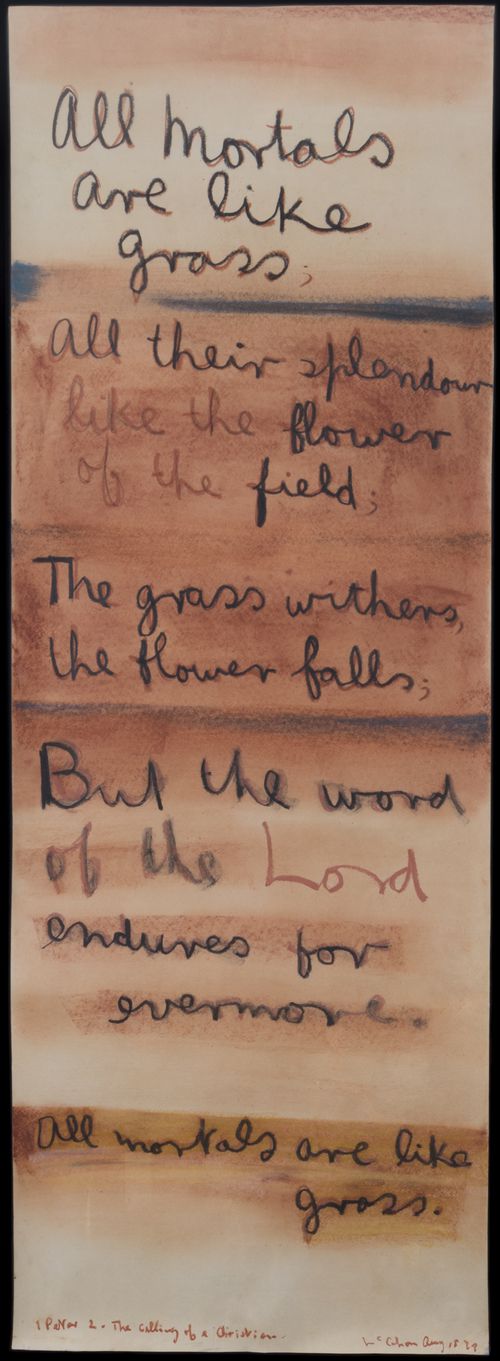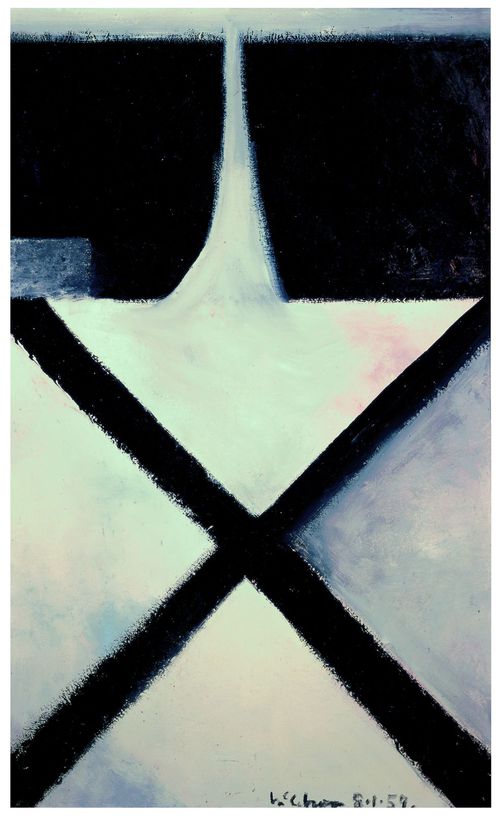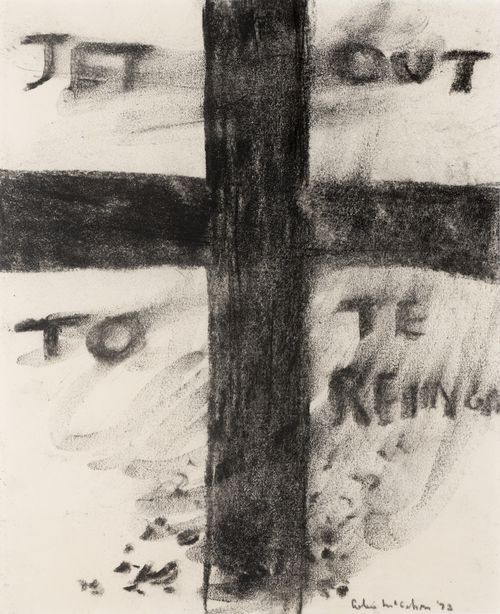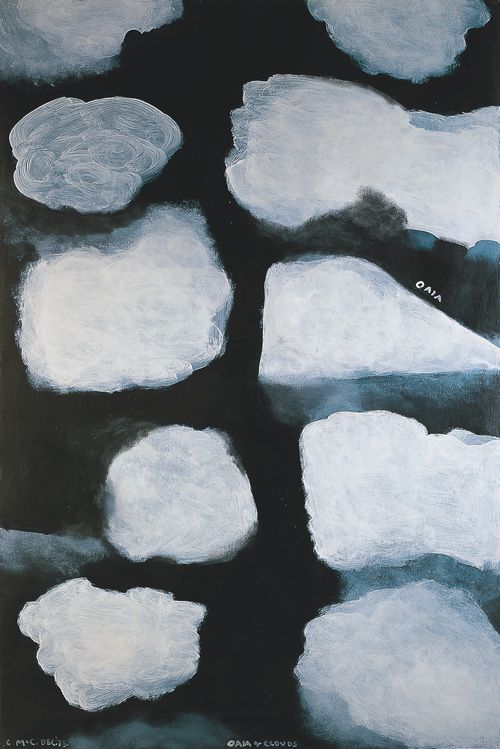East window

Colin McCahon and Richard Killeen, [East window: Convent Chapel of the Sisters of our Lady of the Missions, Auckland], 1965-1966 Auckland Art Gallery Toi o Tāmaki, gift of the Chapel of the Sisters of Our Lady of the Missions, Auckland. Courtesy of the Colin McCahon Research and Publication Trust. Restoration of the windows enabled by The Kelliher Trust.
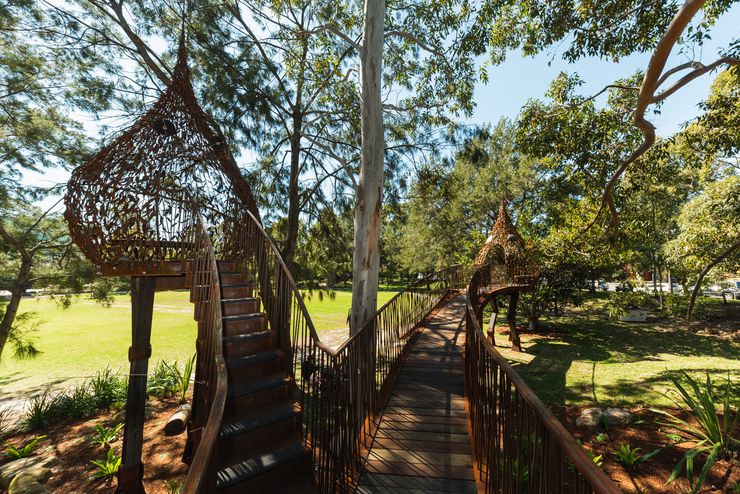
Nell with Cave Urban, Eveleigh Treehouse, Sydney, 2019. Commissioned by Carriageworks and Mirvac. Photo credit Nelson Cortez

East window; Convent Chapel of the Sisters of our Lady of the Missions, Upland Rd, Remuera, Auckland, 1965. Photograph by Nell, Auckland Art Gallery Toi o Tāmaki, E.H McCormick Library archive material, 2014. Courtesy McCahon Research and Publication Trust
Nell
Divisions and Thresholds. Collaborations and Commissions.
When asked to participate in the McCahon100 tribute project, I knew immediately that I wanted to write about the painted glass windows at the Convent Chapel of Our Lady of the Missions. I loved them as much as many of the artist’s other works, and at the time I was working within similar parameters: a commission with a commissioner, a budget, a time frame, architects, other stakeholders etc. To put it more directly, making art for a space that people use.
Moreover, as a non-New Zealander I felt I was on safe ground in writing about the windows, as very few people would have seen them at first hand. Little did I know that 13 of the painted windows were then undergoing conservation and would be publicly exhibited for the very first time at the Auckland Art Gallery Toi o Tāmaki to coincide with the centenary of McCahon’s birth. Naturally, the restored windows have since been a focus of celebration and of renewed scholarly interest. While much has been written, I have tried to avoid this new wave of information in order to stay close to my own thoughts and feelings about the windows. Nevertheless, of course I simply had to go to Auckland and see the restored portion of the windows for myself, and to attend the lectures about them. What follows is an admixture of my thoughts and feelings before and after seeing the restored east windows of the chapel.
In early 2014 I was going through files on McCahon at the Auckland Art Gallery and came across some 1960s-70s-era, curved-corner photographs, the type that used to be dropped off at a local chemist to be developed. The photos were of the painted windows at the convent chapel and The Way of the Cross (1966), a work based on the Stations of the Cross that was positioned above the choir balcony, and closely associated with the windows. Although I was a big fan of McCahon’s work I didn’t have any sense of where the painted windows sat within the chronology of his oeuvre. Nonetheless, I could see everything I knew of McCahon in the painted windows: a perfect tension between light and dark, text and symbols, every element and choice of colour becoming meaningful and alive in a new narrative hybridised from Christian iconography and the New Zealand landscape.
McCahon’s presentation of Biblical stories in a local setting is often compared to the work of the painters of quattrocento Florence, who did the same. There is absolutely no doubt that McCahon’s study of reproductions of the early Renaissance painters directly influenced his work, and that he maintained an ongoing engagement with the history of western painting for the rest of his life. However, my intuition is that this synthesis wasn’t strategic or even highly conscious, but was rather already fused in McCahon’s psyche from his childhood. Add to the mix a love of comic book speech bubbles and local hand-made signwriting and a new form was born. In this regard, McCahon always reminded me more of an early 20th century blues musician from the deep south of the United States than of a European painter from the 1400s. For McCahon, as for the blues men and women, a God who doesn’t understand your life, and who doesn’t live in your neighbourhood, is useless.
It was an inspired act on the part of Auckland’s Roman Catholic Diocese Group architect James Hackshaw to invite McCahon to work on the windows of the Chapel of Our Lady of the Missions. The context of a place of religious worship, the format of the work as a series of panels, the material and metaphorical properties of glass, with the windows as a spiritual concept, could not have been more ideal. McCahon was already dedicated to the quest for a spiritual centre within himself and within his practice. With the Chapel commission, he was finally relieved of this search (and relieved from a generally unsympathetic public response to his work), as the spirit of place and the place of spirit were implicit in the lives of the people who had committed to a religious life at the Convent.
McCahon invested all of his major concerns as artist to date in the painted windows, and they would prove pivotal to his future direction as an artist. It was a huge achievement on many levels. Formally, one of the artist’s most consistent concerns was how to divide a single picture plane; Six days in Nelson and Canterbury (1950) and the triptych On Building Bridges (1952) are great examples. In 1958, stimulated by a recent trip to America, he produced two long, horizontal bodies of work: Northland Panels and The Wake: A Poem in the Forest. Their sequential format facilitated an enlarged narrative experience for viewers, with the divisions between each painting acting as punctuation marks between words in a sentence, or pauses in speech. There is no way of making a long horizontal window other than in multiple panels. Thus the linked yet segmented form of the windows in the Chapel were perfect for McCahon’s newfound method of pictorial storytelling.
At the convent, McCahon was communicating with group of people who spoke a common religious language. The nuns could contemplate an individual window or a single Station in The Way of the Cross. As they traversed the space, longer journeys of contemplation were opened up through passages of the art works. The east windows have a distinct beginning (Alpha), middle (Jesus in the form of IHS) and end (Omega). McCahon skilfully put these symbols to work both narratively and compositionally. These Christograms stood at a human height under a gold disc sun and white clouds – a harbinger of future paintings where text and symbol would come to occupy the same physical space as the viewer. McCahon’s immersion in Roman Catholic symbolism during the Convent commission would also influence many paintings and series that followed immediately afterwards, including The Fourteen Stations of the Cross (1966) Still Life with Altar (1967) and Visible Mysteries (1968). The Scrolls exhibition in 1969 consisted of over 70 vertical paintings installed to create a whole environment - a spatial relationship most likely learned not only from viewing other artists’ works in America but also from how his painted windows functioned in the chapel.
Reflecting the formal divisions of the picture plane, McCahon’s abiding philosophical and spiritual concern was with thresholds. The thresholds are there in the tussle between light and dark, between a text and its meaning, between the secular and the spiritual, as well as in every horizon line, waterfall, way, gate, path, door, cross and bridge. It is also there in the dialogue between the painted two-dimensional images and the three dimensions of their objecthood, as, for example, in the way the big canvases unfurl toward the viewer from their bottom corners, or in the way the Maltese crosses sprout from the top of The Way of the Cross. By leaving some sections of the windows of the Chapel unpainted, the transparent glass allowed the nuns to see through the windows to the ever-changing weather of the outside world, while the painted sections spoke to their internal world. McCahon’s windows were interchangeable entrances (and exits) between physical and spiritual worlds.
Now to the nature of artistic commissions in general, and to the Convent Chapel commission as it pertains to McCahon. For most modern artists, making the works of art that you absolutely need to make and sending them out into the world to an unknown fate and future is completely different from a commission. Often the commissioner bases their invitation on a confidence in those very things that you previously laboured into a risky existence, extending to you the opportunity to build upon them. The speculative work that comes out of the studio feels like an endless stream of orphans searching for a decent home, whereas the commission comes with a community of people and a sure place for a work to live. A good commission is like being on parole from the studio, only to be returned to its solitary confinement once the commission concludes. Over the course of an artist’s career, it seems that finding the ever-shifting balance between working alone and working with others is crucial for creative and mental well-being, as McCahon’s career demonstrates.
I can attest that commissions are not without their challenges, and not all of them end sweetly. But when they do go well, it’s a classic case of contributing to a gestält, to something that becomes greater than the sum of its parts, something that impacts people’s lives in unquantifiable ways long after the work is done. When the windows were finally completed, you can hear a melancholic turn in McCahon’s voice: ‘The job was finished and the Chapel opened, and working toward meaning, in a real situation, came to an end.’1 With this ‘job’ came guaranteed money for McCahon as well as payment and experience for his assistant Richard Killeen. Then art student Paul Dibble benefited from McCahon having recommended him to James Hackshaw to make sculptural objects for the Chapel. For the duration of the commission McCahon was in either casual or robust conversations with these artists, Hackshaw, the builders, the Archbishop, the Mother Superior, the Sisters and the novices.
Working collaboratively was familiar to McCahon from his time in Dunedin and Christchurch, where he made creative contributions to stage sets for theatre productions, posters for social and cultural gatherings, dioramas for the Otago museum, book cover designs, illustrations for publications by his literary contemporaries, even a short-lived jewellery venture. Some of these activities continued once McCahon moved to Auckland, in addition to his new roles as curator and teacher. And we can’t talk about McCahon and collaboration without mentioning the role and support of Anne McCahon, the artist he married. Certainly the company, community and conversation around a shared enterprise of which the painted windows were the centrepiece, made the Chapel commission a wonderful experience for McCahon, a high point in his career. When comparing two subsequent commissions to the painted windows McCahon wrote 'that neither of these allowed the freedom and the discipline of Upland Road'.2
Here, we arrive at a sad part of this visual story. McCahon had painted the windows with regular household enamel paint. Within a short period of time the heat and ultraviolet light of the sun caused the paint to shrivel, flake and fall off. I can’t fathom how heart-broken McCahon (and the extended Convent community) must have been. At the lecture I attended about the restoration of the windows, I asked the conservator how it was that McCahon had no access to information about the longevity of the enamel paint. In the days before data-sheets on materials were readily available, McCahon literally had nobody to ask, apart from the bloke at the hardware store. A former staff member of the Auckland Art Gallery said half-jokingly that McCahon would have been better off to have asked no-one about the archival quality of the paint he used than to have asked the gallery’s then conservator. Ouch. I got a palpable taste of the artist’s isolation, and it was my turn for heartbreak on his behalf.
Like all art, the painted windows of the chapel represent a one-off confluence of time, place, the people involved and the materials at hand. Yet as times change, so does the work of art, as does the society around it. 23 years after McCahon painted them, the opportunity to salvage what remained of the east windows was diligently taken up. Stored for a further thirty years, these fragile treasures lay dormant until time and resources were available for their restoration. I simply adored seeing the restored windows in the flesh. Still, I had to remind myself that McCahon never intended that some of the windows would be exhibited in a museum, at eye level, adjacent to his other works. McCahon once told Peter McLeavey, his long-time dealer and confidant, that he was ‘painting for eyes as yet unborn.’3 I’ve come to think of the restored east windows as being reincarnated and on display for our benefit at this time, with their future lives unimaginable. Back in their first incarnation, in situ at the Chapel, McCahon’s painted windows were witness to the impermanence of the elements and companions to collective meditation, prayer and song.
Lake Hāwea and Sydney
December 2019/January 2020
- Colin McCahon: A Survey Exhibition, Auckland: Auckland City Art Gallery, 1972, p.33
- ibid.
- The Man in the Hat, Directed by Luit Bieringa, Wellington: Blair Wakefield Productions, 2009. https://www.nzonscreen.com/title/the-man-in-the-hat-2009
Other sources:
Marja Bloem and Martin Browne (eds), Colin McCahon: A Question of Faith (exhibition catalogue), Asterdam: Stedelijk Museum, 2002
Alexa Johnston, Colin McCahon, Sarah Hillary and Annette McKone, Working towards Meaning: The Restoration of Colin McCahon’s Chapel Windows, Auckland: Auckland Art Gallery Toi o Tāmaki, 2019 https://assets.aucklandartgallery.com/assets/media/working-towards-meaning-the-restoration-of-colin-mccahons-windows-pages.pdf
